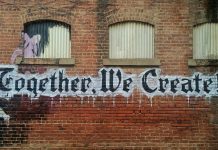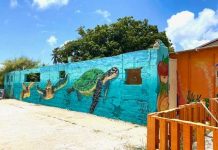Continuing the dialogue on the synergy between the Aruban creative industry and knowledge economy, it is important to share some possible conceptual frameworks that might help people understand how these two economies could work together in fostering creativity, knowledge and innovation. Over these past months I have discussed how the development of creativity, knowledge, and innovation should start when one is young, and should have a firm bases in Aruba’s education system. With the implementation of Aruba’s first STEM faculty at the UA, should we not think about how we can maximize the participation of students by laying a foundation for them in elementary and middle school? Well, there is one way this can be achieved: the STEAM model.
STEAM – what and why?
For those who are not familiar with STEAM, it is an educational approach that incorporates the arts into the more-familiar Science, Technology, Engineering and Mathematics “STEM” model. This way STEAM (science, technology, engineering, arts and math) programs can include any of the visual or performing arts, such as dance, design, painting, photography and writing. Since the emergence of the knowledge economy in the 20th century, the focus has been on STEM fields and education taking into account the ongoing shortage of technology workers during that time. Since then, globally, governments have invested heavily in STEM education and its promotion, and has now made its way in Aruba with the start of the SISSTEM faculty at the University of Aruba. The increasing emphasis on obtaining STEM skills has inescapably led to decreased emphasis on other subjects in the arts and humanities, resulting in decreased funding for them while students have fewer arts-related options. Overall, studies have shown that the reintegration of art and design into education increases the happiness and well-being of students. Also, from a business perspective, the major benefits include better problem-solving skills and increased creativity and innovation. Considering the vision of the current Aruban Government, the integration of arts into STEM education and fields may also help encourage more participation by women in what have been male-dominated areas.
STEAM education originated from Science, Technology, Engineering, and Mathematics (STEM)
education, which was originally proposed by the American University of Virginia scholar Georgette Yakman in the study of comprehensive education, whose purpose is to strengthen the United States (US) K–12 education in science, technology, engineering, art, and mathematics (Wang et. al, 2018). The major fall back from the STEM is that our economy requires so much more than an understanding of science, technology, engineering and math. It requires application, creation and ingenuity to be able to innovate, and STEM alone does not foster these essential nutrients. The STEAM model aims to use the benefits of STEM and complete the package by integrating these principles in and through the arts. This way STEAM takes STEM to the next level by allowing students to connect their learning in these critical areas together with arts practices, elements, design principles, and standards to provide the whole pallet of learning at their disposal. Also, STEAM removes limitations and replaces them with wonder, creativity, critique, inquiry, and innovation.
The primordial reason why STEAM education could be a hit on the island lies in its diverse nature. In the process of future sustainable development, human society faces problems such as 1. Severe population load, 2. Economic transition, and 3. A lack of educational measures. One of the root causes of these problems is the shortage of innovative talents which has been the case for Aruba. According to Wang, Xo, and Guo (2018) “with a multidisciplinary fusion feature, STEAM education focuses on cultivating students’ innovative capability and engineering literacy. It has a great advantage in dealing with the three key issues stated above” (p.2). In this paper, just like China, Aruba’s population is increasing, faces a lack in innovative economies, and experiences a shortage of innovative talent and brain drain. “Innovative talent is the key to the core competitiveness of the country. Although the United States ranks first in terms of comprehensive innovation capability, it still puts forward a STEAM education strategy that is committed to improving citizens’ innovative practice” (p.3). In the Caribbean according to the STEAM Educational Movement founded in 2006, there are currently STEAM programs and educators being provided in the British Virgin Islands, the Dominican Republic, and the Bahamas.
STEAM on Aruba?
During the summer break I took notice of the innovation camp organized by FUTURA where local kids had the opportunity to interact in an innovative, creative and knowledge friendly space with the intention of introducing them to the world of STEM. Interestingly, in the Education Policy 2030, the Aruban Government confirmed their vision of shifting the Aruban education system to a more inclusive, diverse, multi-lingual approach so it can sustain the vision of Aruba to become more innovative. My question is: why not multi-disciplinary? Since this is the most important aspect of innovative education. By putting such great importance on STEM subjects you will eventually exclude students of developing other capabilities that will compliment the more technical skills or you can exclude more “creative and artistic” students of innovating. It would be interesting for education policy makers, educators, and other relevant stakeholders to consider analyzing how the US is using the STEAM program within their curriculum and who this could be translated to the Aruban context. Aruba has so much creativity to offer the world, so let’s start young and equipping our students with the most versatile and resilient framework currently in the world known to encourage innovation in communities. For sure in future column I will break down the STEAM model further, but for now, just know that the synergy between the creative industry and knowledge economy could offer Aruba a lot more than just socio-economic development, it can truly inspire innovation. q










